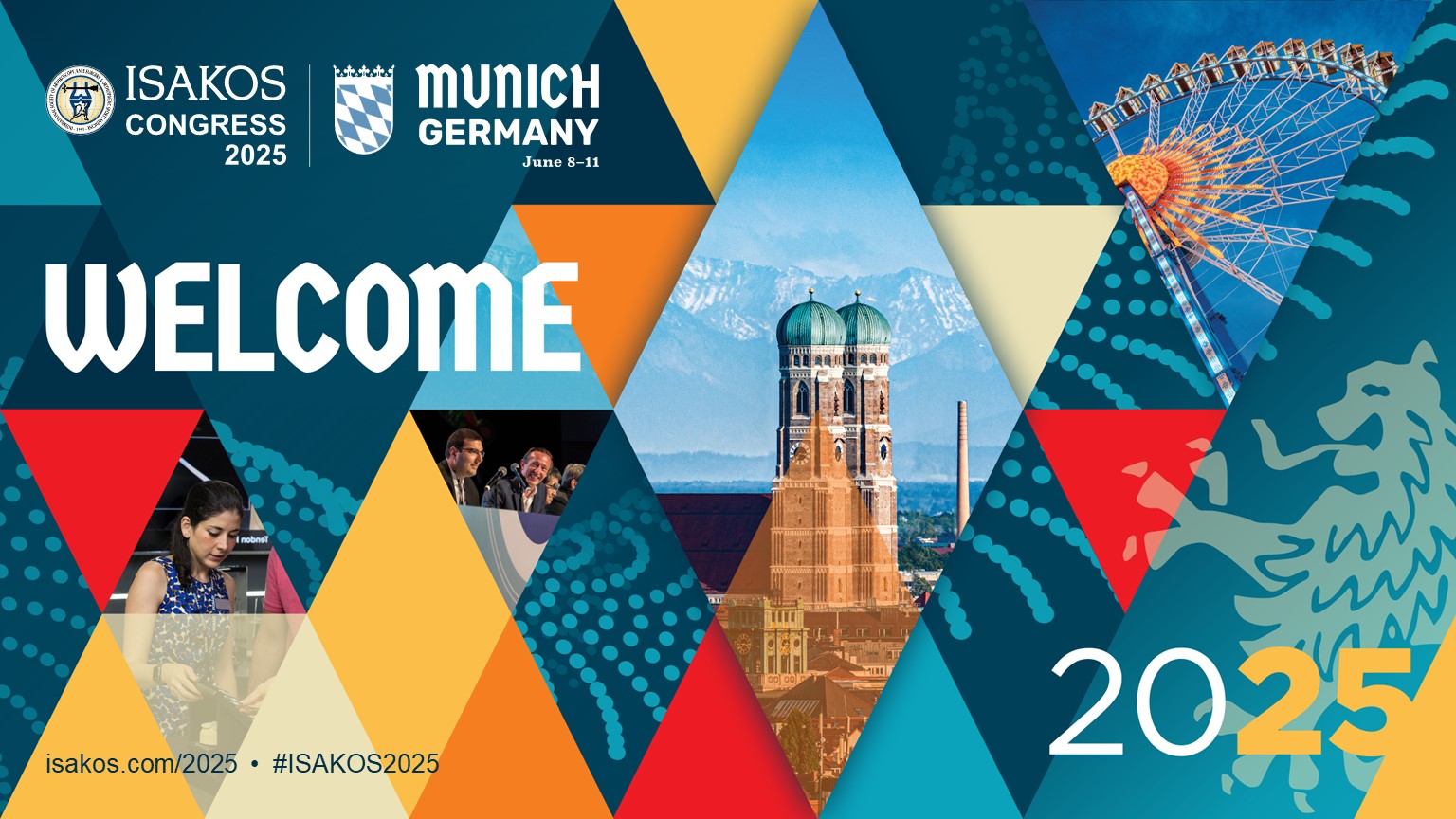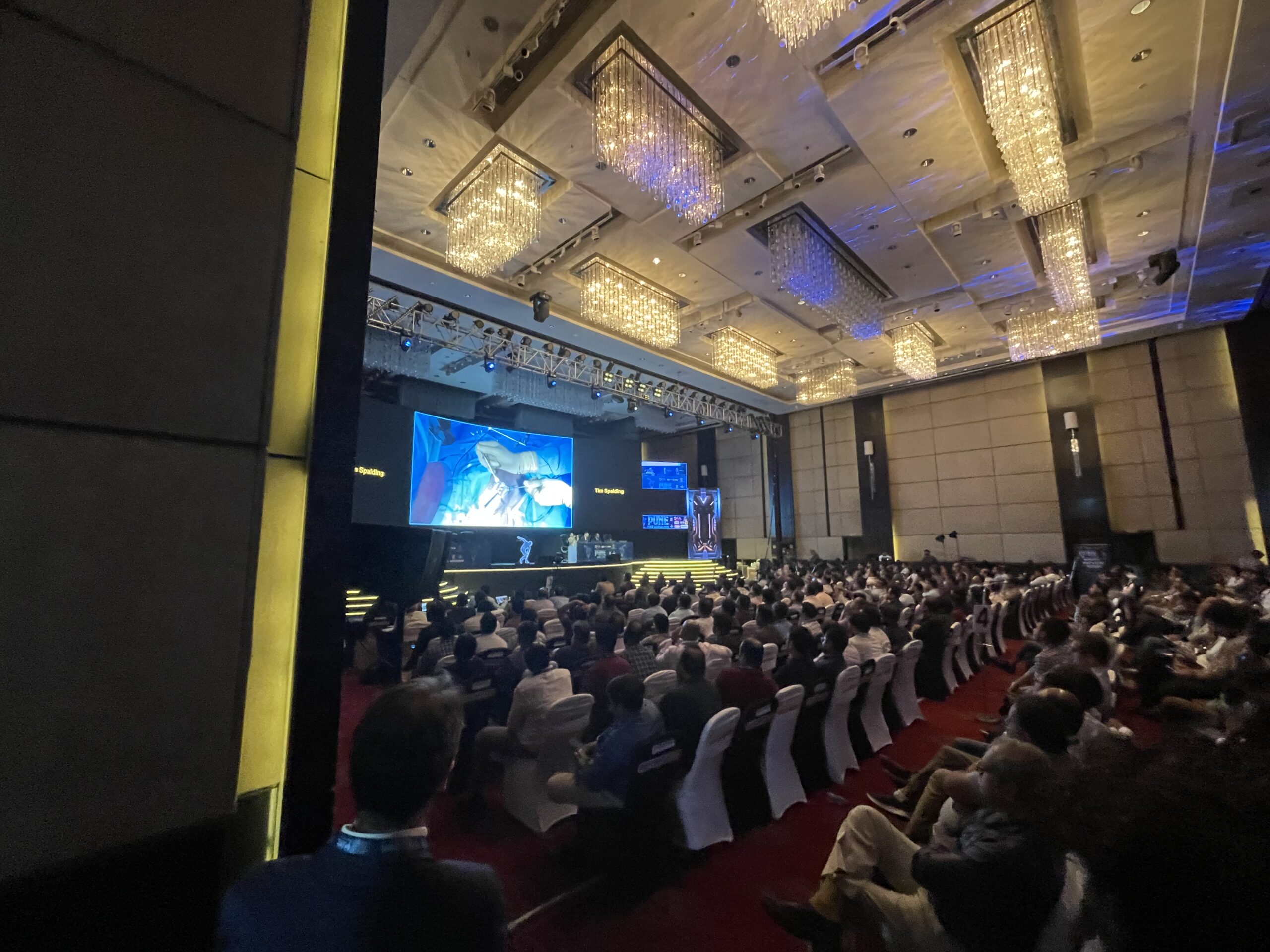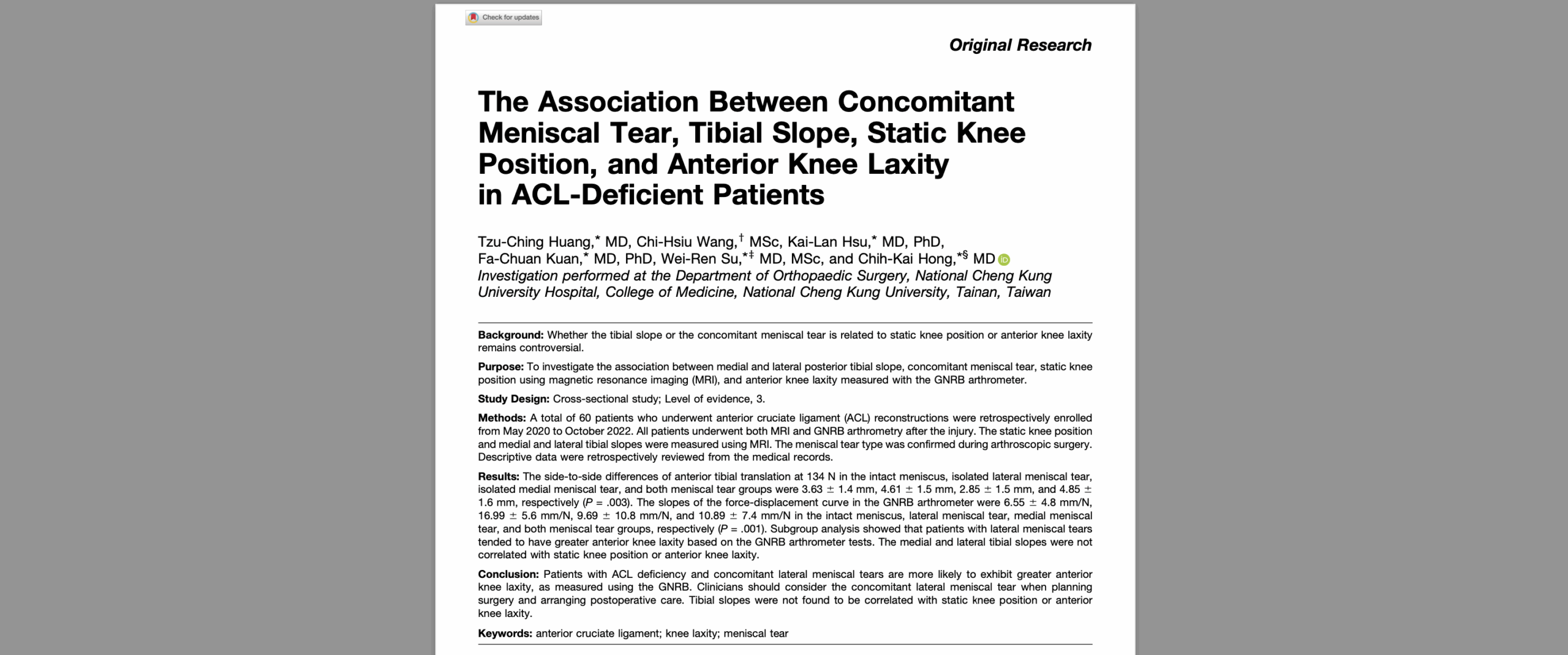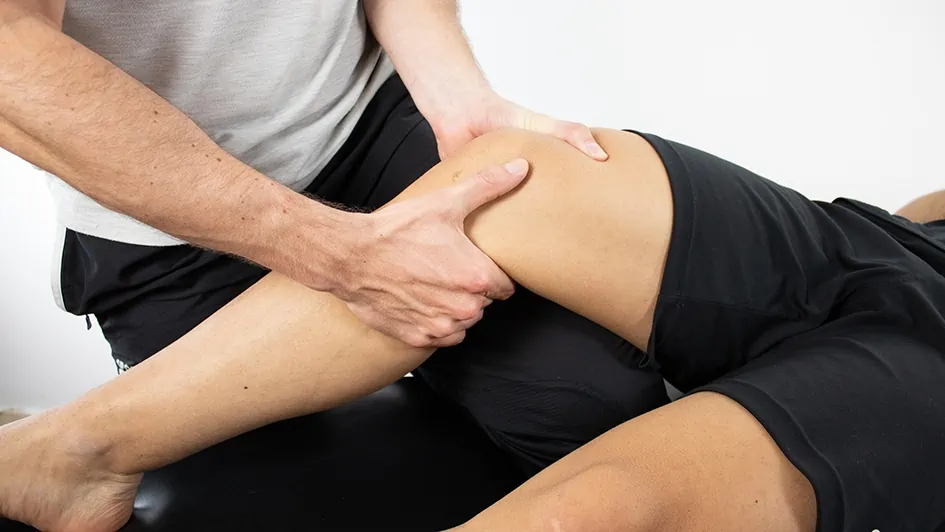
Study Title: Early Postoperative Evaluation of Arthrogenic Muscle Inhibition, Anterior Knee Laxity, and Kinesiophobia After ACL Reconstruction: A Cross-Sectional Observational Study
Authors: Florian Forelli, Yoann Demangeot, Agathe Dourver, Adrien Cerrito
Journal: Healthcare (MDPI)
Publication Date: June 2025
DOI: 10.3390/healthcare13131481
Institution: Haute-École Arc Santé, HES-SO University of Applied Sciences and Arts Western Switzerland, Delémont, Switzerland
Overview
This study addresses a practical early-rehabilitation question after anterior cruciate ligament reconstruction (ACLR): do arthrogenic muscle inhibition (AMI), anterior knee laxity, and kinesiophobia move together—or independently—in the first month after surgery? Using a standardized protocol at ~5 weeks post-op, the authors evaluated 56 young, physically active patients who underwent primary ACLR with hamstring autografts. Each participant completed a single assessment session that included clinical AMI grading, instrumented anterior knee laxity using the GNRB® arthrometer, and the Tampa Scale for Kinesiophobia-11 (TSK-11).
Methods in brief
All testing occurred at 34.9 ± 4.2 days after surgery in a controlled clinical setting. AMI was graded by an experienced physical therapist based on quadriceps activation and the ability to achieve full extension; the authors note that while this pragmatic clinical scale is used in the literature, it lacks formal validation and inter-rater reliability, which is relevant when interpreting negative associations.
Anterior laxity was quantified with the GNRB® (Genourob, France): patients were tested supine with the knee at 20° of flexion; an anterior tibial load of 134 N was applied; and the primary variable was the side-to-side difference (mm) between the operated and contralateral knee. The device is recognized as reliable for quantifying anterior translation in both clinical practice and research.
Kinesiophobia was measured with the TSK-11 (range 11–44, higher scores indicating greater fear of movement/reinjury). All three assessments were completed within the same session, in the same order, to minimize sequencing effects.
The team planned the sample size a priori for correlation testing (assumed r = 0.40, α = 0.05, power = 0.80), yielding a minimum of 47; allowing for ~10% attrition, they targeted ≥53 and ultimately analyzed 56 participants.
Participants
The cohort comprised 56 patients (41 men, 15 women), mean age 26.5 ± 5.7 years; all were recreational or competitive athletes and followed a standardized post-operative rehabilitation protocol.
Key results
The principal finding is no significant association across domains at ~1 month:
TSK-11 scores did not differ across AMI grades (p = 0.327).
GNRB® side-to-side laxity did not differ across AMI grades (p = 0.182).
The correlation between GNRB laxity and TSK-11 was non-significant (ρ = −0.220; p = 0.103).
Descriptively, the most severe AMI subgroup (grade 2b) showed higher mean TSK-11 values and, interestingly, slightly negative side-to-side laxity (−0.45 mm), but these small groups did not alter the overall non-significant group comparisons.
Interpretation
At 4–6 weeks post-ACLR—the window when inflammation, altered afferent input, and neuroplastic changes are prominent—the data suggest that neuromuscular inhibition (AMI), mechanical anterior stability, and fear-avoidance beliefs behave as independent constructs. In other words, clinicians should not infer early kinesiophobia from the presence of AMI, nor assume that instrumented anterior laxity predicts fear or vice versa. Each dimension warrants separate assessment and targeted intervention.
This aligns with a conceptual model in which acute joint physiology (effusion, nociception) drives AMI early on, while fear responses emerge as patients transition from passive healing to more active rehabilitation. Mechanical laxity in this phase—typically within acceptable post-operative ranges—may not meaningfully influence psychological state or motor inhibition yet. The lack of cross-sectional association at one month does not exclude later interactions; prior work links fear to function and strength at later timepoints, reinforcing the need for longitudinal follow-up.
Clinical implications
Assessment. A tri-axial early check-up is justified: (1) AMI graded clinically (or with adjuncts like burst-superimposition where available), (2) objective laxity under standardized load/angle (e.g., GNRB® 134 N at 20°; side-to-side mm), and (3) TSK-11 screening for kinesiophobia. Decisions should rely on the actual data from each domain rather than assumptions about their interplay.
Rehabilitation focus.
For AMI, prioritize effusion and pain management, quadriceps activation strategies, and progressive neuromuscular re-education; AMI at this stage reflects modifiable reflex inhibition.
For laxity, continue routine instrumented follow-up using consistent test conditions; document side-to-side change over time rather than over-interpreting single early values.
For kinesiophobia, use the TSK-11 to identify high scorers early and integrate reassurance, graded exposure, and expectation management into therapy blocks.
Strengths and limitations
Strengths include a clearly defined early post-operative window, standardized testing sequence within a single session, objective quantification of anterior translation, and an a priori sample-size calculation with adequate power for moderate correlations.
Limitations are important when interpreting the null findings. First, the AMI grading scale is pragmatic and clinically intuitive but lacks formal validation and inter-rater reliability; misclassification could attenuate true associations. Second, the design is cross-sectional: it cannot determine whether domain relationships emerge later as patients progress to higher-demand tasks. Third, the sample is confined to hamstring autografts and a narrow age/activity profile, which supports internal consistency but may limit generalizability to other grafts or lower-activity populations. Finally, instrumented testing targeted linear anterior translation at a single flexion angle and load; the study does not address rotational stability or variable-load stiffness, which may relate differently to patient-reported constructs.
How this informs practice and research
For clinicians, the message is pragmatic: in the first month after ACLR, treat what you see in each domain. An athlete with marked AMI may still report low fear, and someone with elevated TSK-11 may nonetheless display acceptable anterior translation under standardized load. Building domain-specific progressions—neuromuscular activation for AMI, graded exposure and reassurance for kinesiophobia, and periodic instrumented monitoring for laxity—appears more defensible than assuming improvement in one area will pull the others along.
For researchers, the work invites longitudinal designs that track the three domains at multiple checkpoints (e.g., 6 weeks, 3 months, 6 months, return-to-sport clearance) and integrate additional mechanistic measures such as quadriceps torque with superimposed burst techniques, joint effusion quantification, and sensorimotor metrics. Given the early null associations, future studies might also examine threshold effects (e.g., laxity outside typical post-op ranges) and intervention-response interactions—does a targeted AMI program reduce later kinesiophobia, or vice versa?
Bottom line
At ~5 weeks after ACLR with hamstring autografts, AMI, anterior knee laxity, and kinesiophobia are not significantly related in cross-sectional analysis. Early rehabilitation should therefore assess and manage each construct independently, with standardized instrumented laxity testing (e.g., GNRB® 134 N at 20°), pragmatic AMI grading, and routine TSK-11 screening to guide targeted care. Larger longitudinal studies are warranted to determine when—and if—these domains converge later in recovery.
For researchers, the work invites longitudinal designs that track the three domains at multiple checkpoints (e.g., 6 weeks, 3 months, 6 months, return-to-sport clearance) and integrate additional mechanistic measures such as quadriceps torque with superimposed burst techniques, joint effusion quantification, and sensorimotor metrics. Given the early null associations, future studies might also examine threshold effects (e.g., laxity outside typical post-op ranges) and intervention-response interactions—does a targeted AMI program reduce later kinesiophobia, or vice versa?






